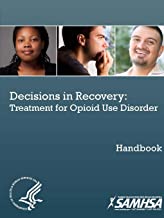Opioid Use Disorder
Cluster Number:
Wiki Number: PW144
Diagnosis: Opioid Use Disorder
US Patients: About 27 million in 2016
World Patients:
Sex Ratio: M+;F
Age Onset: Young adults
Brain Area: Opioids reduce dopamine in nucleus accumbens. Neuroimaging affects in the orbitofrontal area-reducing reward-behaviors
Symptoms: strong desire to use oioids, tolerance, withdrawal symptoms & living normal lives; most US heroin users began with prescriptions
Progression: Long term use shows dysregulation of brain circuits for emotion, distress and high impulsivity.
Causes:
Medications: opioid replacement threrapy uses methadone or buprenophine and naltrexone; heroin withdrawal symptoms from 2 days-2 weeks
Therapies: CBT; Lohr’s “Calming My Pain!” (DVD or Download from this website) helps to retrain the brain to reduce pain without opioids.
Youtube Video:Here’s Why Opioid Addiction Is So Intense
Amazon or Library Book: Decisions In Recovery:
Treatment for Opioid Use Disorder
Click the text to click or buy from Amazon.

